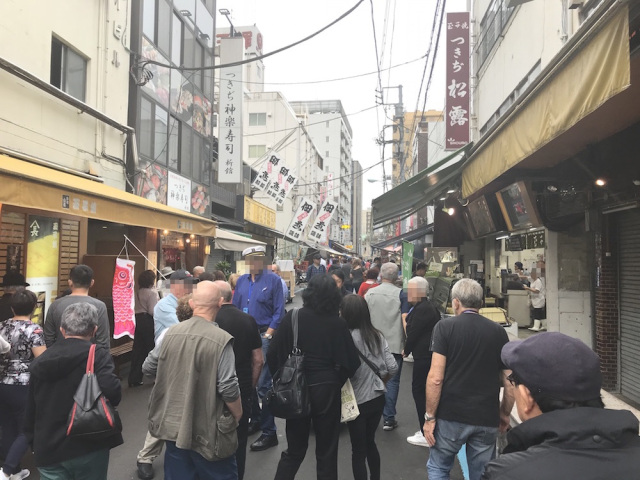
Our reporter investigates.
Earlier this month, the world’s largest wholesale fish and seafood market said farewell to its Tsukiji location in Tokyo after 83 years, relocating to Toyosu, roughly 2.3 kilometres (1.4 miles) away.
Since then the Toyosu Market opened on 11 October, grappling with a number of issues on its first day, as market vendors opposed to the move attempted to continue sales at the former site while Tokyo braced itself for a possible influx of rats escaping from the cracks and crevices of Tsukiji.
So how has Tsukiji changed since the move? Has the area turned into a ghost town with rats scuttling by on quiet streets or is there little difference here in the everyday? Curious to find the answer to these questions, our Japanese-language reporter Takashi set out to talk to the owner of one of the nearby restaurants, Hinaiji Dori to Sakana Dokoro Niconico Tsukiji.
Takashi: It’s been about two weeks since the Tsukiji Fish Market move. Have things changed around here since then?
Well, it was the world’s largest wholesale fish and seafood market that moved, so there’re noticeably less people around. However, Tsukiji’s Outer Market is still operating, so it’s not like Tsukiji has become totally deserted. There are still people coming here from inside and outside the country.
Takashi: I could sense that as I was walking around. The amount of foot traffic here really has reduced, but it’s still lively around here, isn’t it?
Yes, I think people who live in Tokyo and who’ve been to Tsukiji will understand this, but the move doesn’t mean that Tsukiji will disappear. There’s still fish and sushi here at the Outer Market, so I’m hoping things will become better once people realise this, because there are people who are mistakenly thinking everything is dead around here now.
Takashi: It’s a weekday today, so that’s probably why there aren’t a lot of people around here at the moment. But would you say there’s been any impact on tourism in the area due to the relocation?
I feel there are less people here now on weekdays, but on the Saturday immediately after the relocation, it felt like there was no change. It’ll be a matter of time before we can really tell if there’s a difference, so we’ll have to wait and see. Perhaps numbers will decrease from now on.
However, the Outer Market is hanging in the balance at the moment now too, so hopefully tourists will naturally return to the area. The move to Toyosu was well publicised, but I think there are still many people who want to enjoy the atmosphere of Tsukiji and its fresh seafood.
Takashi: I see. So, would you say the relocation has had an effect on restaurants in the area?
Well, not a lot of time has passed since the move so there hasn’t been any dramatic change yet. For our restaurant, most of our customers are salarymen, and we’re a little removed from the road so I guess we’re hard for tourists to find (laughs).
However, we have seen an impact on our deliveries, as operations are being hindered. Before, we were able to receive deliveries quite quickly, but now it takes more time as the number 2 Ring Road can’t be used until 4 November. Of course, we’re discussing countermeasures for this, but there are still a lot of points that need ironing out so it’s a bit of a worry.
Takashi: What about the eateries around you? Have they been affected?
Yes, I believe even places on the main roads, which are easily accessible to tourists, are also feeling the effect. Every place is fumbling around at the moment.
Takashi: I know it might be a touchy subject, but I’m curious to know if anything can be done to avoid the migration of rats from the Tsukiji market area.
They’ve just started dismantling the former market complex so it’s probably only a matter of time before the mass migration. Officials are working on countermeasures, but rats have excellent learning abilities, and they can jump more than a metre (3.3 feet) high and easily slip into tight spaces, so they can really move in unimaginable ways. There are plans to round them all up, but they’re smart so it will be impossible to make a big dent in the population. It’s probably unlikely that they’ll be able to contain them at the former market site because conditions there will no longer be ideal for the rats.
Takashi: Yes, well, they’ll no longer have all that good-quality food right there for them, after all. So, if they move, where will they go to? People are saying a lot of them will wind up in the Ginza area…
The rats will be looking for food so they’ll probably head to Ginza and Shimbashi, where a lot of restaurants are located. You’ll probably see more of them in the street there than before. It’s not like you’ll have a chance to see them during the day, but without a doubt there’ll be more sightings during the evening and nighttime.
▼ These gates will do nothing to stop the rats from escaping.
Takashi: It’s not unusual to see rats in a metropolis, but it’s definitely something you don’t want to encounter. So what are restaurants at Tsukiji doing to protect against rats?
We’ve always been diligent about that, but it’s up to each individual restaurant. There are many old buildings here so lots of places will have to really put measures in place to get to the core of the problem. You want rats to think that your building is impossible to penetrate. Restaurants are all doing their utmost to ensure that customers have nothing to worry about.
Takashi: If the rats do mass migrate, when do you think that would happen?
The scariest time will be once rats have gotten used to the countermeasures humans have put in place against them, rather than now. As I mentioned before, rats are smart, so as soon as people get complacent, there’s the possibility of them appearing in large numbers. It will be difficult to guard against them completely, but we don’t want it getting to that stage.
After all this talk about rats, Takashi decided to lighten the mood by shifting the focus to the future of Tsukiji following the relocation.
Takashi: Although the market has moved, I feel that Tsukiji itself hasn’t really changed. I would be lying if I said I wasn’t sad about it, but for me personally I’m no good with crowds so I prefer it with less people around.
Yes, it’s good for people who don’t like crowds (laughs). While people who want to see the tuna auctions will have no choice but to go to Toyosu, the real atmosphere of Tsukiji is still here in this area. Even though the market’s moved, the freshness and quality of the food here remains unchanged.
Takashi: Certainly, I haven’t seen any change in freshness here.
Honestly, it hasn’t changed from before. Judging from the restaurants, the ingredients are still all top-notch and you can still eat delicious fish and sushi at Tsukiji. Everyone is working hard to please their customers with no change to the quality of their food to retain the brand strength in the Tsukiji name.
Takashi: If anything, it’s easier now to enjoy everything about Tsukiji without the crowds! So, finally, when should people visit?
Now! (laughs) There’s no minuses to visiting here after the move. The number of customers have decreased now so it’s easier to come here. Plus, you can walk around and enjoy the Outer Market and the area of Tsukiji itself.
So there you have it – fresh from a local’s mouth. Tsukiji is still alive and well following the market move, and as long as locals and tourists continue to visit, the historic area looks set to retain its market atmosphere well into the future. With or without those pesky rats.
Photos © SoraNews24

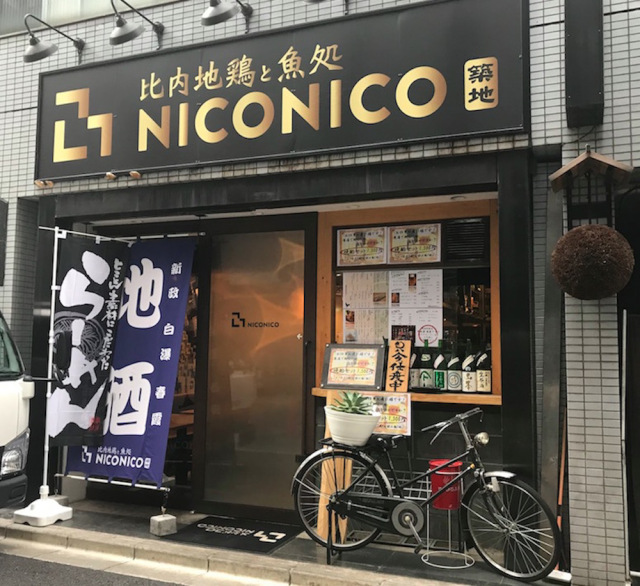
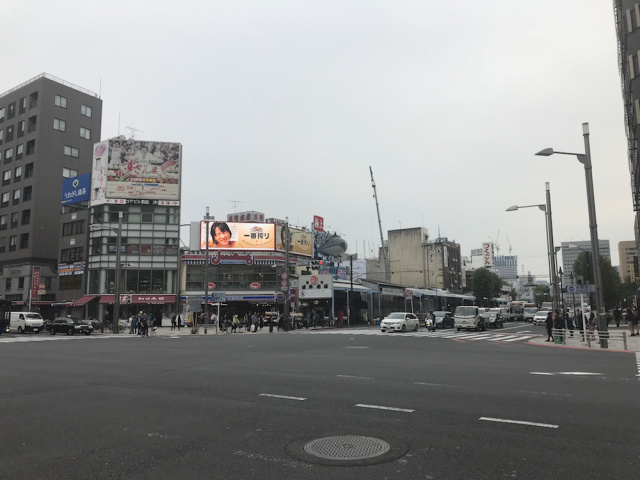
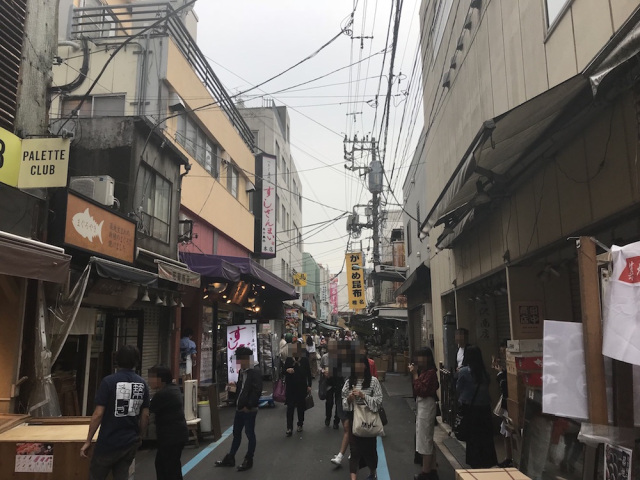
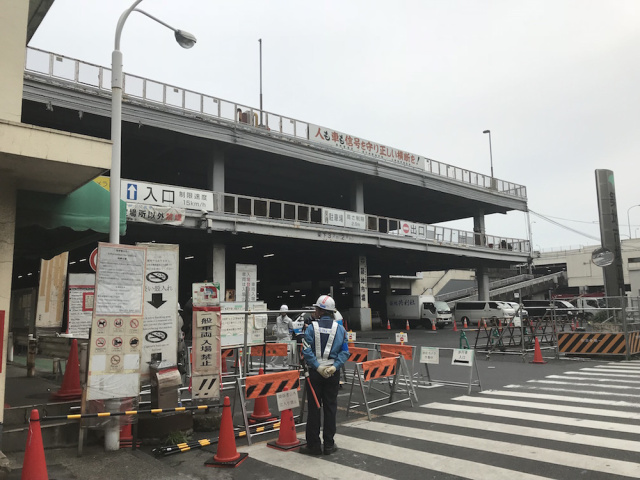
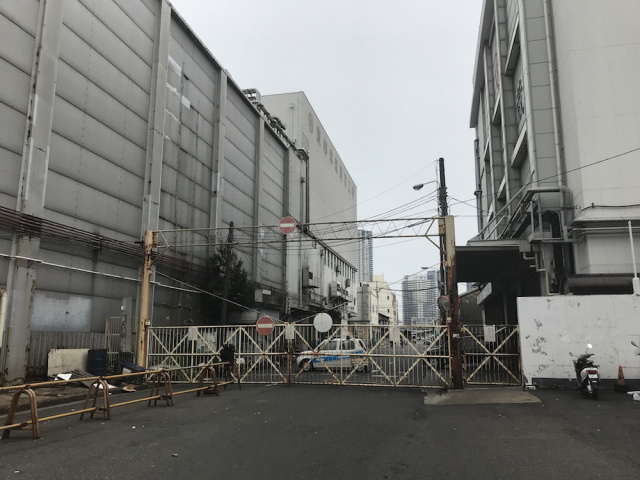
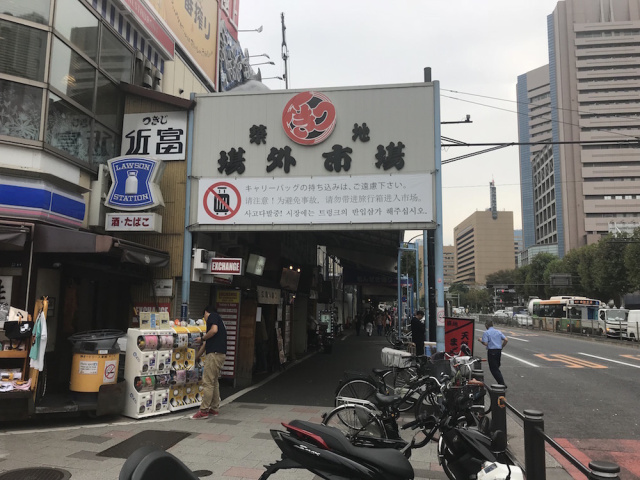
 Tokyo braces for potential rat infestation as Tsukiji fish market closes
Tokyo braces for potential rat infestation as Tsukiji fish market closes With its Inner Market closed down, we stop by Tsukiji to see how Tokyo’s sushi mecca is coping
With its Inner Market closed down, we stop by Tsukiji to see how Tokyo’s sushi mecca is coping Sushi Dai and other famous restaurants from Tsukiji fish market open at new Toyosu location
Sushi Dai and other famous restaurants from Tsukiji fish market open at new Toyosu location Beef bowl chain Yoshinoya’s historic first store to close, special countdown site launched!
Beef bowl chain Yoshinoya’s historic first store to close, special countdown site launched! 5 reasons why foreign tourists should skip Tsukiji and go to a different place in Tokyo instead
5 reasons why foreign tourists should skip Tsukiji and go to a different place in Tokyo instead How to order snacks on a Shinkansen bullet train in Japan
How to order snacks on a Shinkansen bullet train in Japan Burger King Japan suddenly adds Dr. Pepper and Dr. Pepper floats to its menu nationwide
Burger King Japan suddenly adds Dr. Pepper and Dr. Pepper floats to its menu nationwide Demon Slayer: Kimetsu no Yaiba gets new roller coaster attractions and food at Universal Studios Japan
Demon Slayer: Kimetsu no Yaiba gets new roller coaster attractions and food at Universal Studios Japan Japan’s new difficult-to-drink-from beer glass protects your liver, but it’s a brutal experience
Japan’s new difficult-to-drink-from beer glass protects your liver, but it’s a brutal experience Hello, cosmetics! Clinique teams up with Hello Kitty this summer for first-time collaboration
Hello, cosmetics! Clinique teams up with Hello Kitty this summer for first-time collaboration Nintendo history you can feel – Super NES, N64, and GameCube controllers become capsule toys
Nintendo history you can feel – Super NES, N64, and GameCube controllers become capsule toys Studio Ghibli releases Ponyo donburi bowl to bring anime ramen to life
Studio Ghibli releases Ponyo donburi bowl to bring anime ramen to life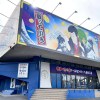 A visit to the best UFO catcher arcade in the universe!
A visit to the best UFO catcher arcade in the universe! New samurai glasses are Japan’s latest weird must-have souvenir
New samurai glasses are Japan’s latest weird must-have souvenir New Japanese banknotes selling online for up to 40 times original value
New Japanese banknotes selling online for up to 40 times original value “The most Delicious Cup Noodle in history” – Japan’s French Cup Noodle wins our heart【Taste test】
“The most Delicious Cup Noodle in history” – Japan’s French Cup Noodle wins our heart【Taste test】 Starbucks releases a cute Frappuccino and Unicorn Cake…but not in Japan
Starbucks releases a cute Frappuccino and Unicorn Cake…but not in Japan Kyoto Tower mascot termination reveals dark side behind cute Japanese characters
Kyoto Tower mascot termination reveals dark side behind cute Japanese characters McDonald’s Japan’s Soft Twist Tower: A phantom ice cream only sold at select branches
McDonald’s Japan’s Soft Twist Tower: A phantom ice cream only sold at select branches Yabai Ramen: What makes this Japanese ramen so dangerous?
Yabai Ramen: What makes this Japanese ramen so dangerous? Finally! Nintendo Japan expands Switch 8-bit controller sales to everybody, Online member or not
Finally! Nintendo Japan expands Switch 8-bit controller sales to everybody, Online member or not Japanese government wants to build luxury resorts in all national parks for foreign tourists
Japanese government wants to build luxury resorts in all national parks for foreign tourists To combat declining birth rate, Japan to begin offering “Breeding Visas” to foreigners
To combat declining birth rate, Japan to begin offering “Breeding Visas” to foreigners 10 things you should buy at 7-Eleven in Japan
10 things you should buy at 7-Eleven in Japan Studio Ghibli releases anime heroine cosplay dresses that are super comfy to wear
Studio Ghibli releases anime heroine cosplay dresses that are super comfy to wear Woman charged for driving suitcase without a license in Osaka
Woman charged for driving suitcase without a license in Osaka Studio Ghibli unveils My Neighbour Totoro miniature house model
Studio Ghibli unveils My Neighbour Totoro miniature house model Kyoto experiencing problems with foreign tourists not paying for bus fares, but not on purpose
Kyoto experiencing problems with foreign tourists not paying for bus fares, but not on purpose Fighting mild hunger with a Japanese soda that turns into jelly in the stomach【Taste test】
Fighting mild hunger with a Japanese soda that turns into jelly in the stomach【Taste test】 Studio Ghibli’s Howl’s Moving Castle tapestry unveiled in Japan for first time
Studio Ghibli’s Howl’s Moving Castle tapestry unveiled in Japan for first time McDonald’s new Happy Meals offer up cute and practical Sanrio lifestyle goods
McDonald’s new Happy Meals offer up cute and practical Sanrio lifestyle goods Sales of Japan’s most convenient train ticket/shopping payment cards suspended indefinitely
Sales of Japan’s most convenient train ticket/shopping payment cards suspended indefinitely Sold-out Studio Ghibli desktop humidifiers are back so Totoro can help you through the dry season
Sold-out Studio Ghibli desktop humidifiers are back so Totoro can help you through the dry season Japanese government to make first change to romanization spelling rules since the 1950s
Japanese government to make first change to romanization spelling rules since the 1950s Foreigner’s request for help in Tokyo makes us sad for the state of society
Foreigner’s request for help in Tokyo makes us sad for the state of society Ghibli founders Toshio Suzuki and Hayao Miyazaki contribute to Japanese whisky Totoro label design
Ghibli founders Toshio Suzuki and Hayao Miyazaki contribute to Japanese whisky Totoro label design Doraemon found buried at sea as scene from 1993 anime becomes real life【Photos】
Doraemon found buried at sea as scene from 1993 anime becomes real life【Photos】 Tokyo’s most famous Starbucks is closed
Tokyo’s most famous Starbucks is closed Princesses, fruits, and blacksmiths: Study reveals the 30 most unusual family names in Japan
Princesses, fruits, and blacksmiths: Study reveals the 30 most unusual family names in Japan Tokyo’s newest hot spring bathhouse and foodie spot opening next to Japan’s biggest fish market
Tokyo’s newest hot spring bathhouse and foodie spot opening next to Japan’s biggest fish market Tokyo’s Tsukiji Hongan Temple opens a cafe, breakfast set has 16 side dishes!
Tokyo’s Tsukiji Hongan Temple opens a cafe, breakfast set has 16 side dishes! Tokyo’s sushi spirit shrine, where the souls of seafood slumber
Tokyo’s sushi spirit shrine, where the souls of seafood slumber David Beckham visits Japan with son Brooklyn, feasts on Japanese sushi and wagyu beef
David Beckham visits Japan with son Brooklyn, feasts on Japanese sushi and wagyu beef Huge fire breaks out at Tokyo’s world-famous Tsukiji Fish Market【Videos, photos】
Huge fire breaks out at Tokyo’s world-famous Tsukiji Fish Market【Videos, photos】 Yaizu: Japan’s best sushi market destination even most foodies in Japan have never heard of
Yaizu: Japan’s best sushi market destination even most foodies in Japan have never heard of Eel-topped takoyaki is delicious in any season, but here’s why now is the best time to try it
Eel-topped takoyaki is delicious in any season, but here’s why now is the best time to try it Takoyaki store in Tsukiji serves up dried bonito flakes even bigger than the octopus balls
Takoyaki store in Tsukiji serves up dried bonito flakes even bigger than the octopus balls Tokyo Governor’s party may restrict smoking from private homes and cars with children inside
Tokyo Governor’s party may restrict smoking from private homes and cars with children inside Tsukiji alternative – Tokyo has a second fish market, and it turns out it’s awesome too
Tsukiji alternative – Tokyo has a second fish market, and it turns out it’s awesome too This 7-Eleven convenience store causes a buzz with foreigners online
This 7-Eleven convenience store causes a buzz with foreigners online Shibuya rats scuttle along streets in the wake of Typhoon Hagibis【Video】
Shibuya rats scuttle along streets in the wake of Typhoon Hagibis【Video】 Try this netizen’s “secret menu” item beef bowl at Yoshinoya, if only to see what the heck it’s about
Try this netizen’s “secret menu” item beef bowl at Yoshinoya, if only to see what the heck it’s about Ninja rat spotted in New York City
Ninja rat spotted in New York City Japan’s 10 best cultural experience activities/tours, as chosen by travelers
Japan’s 10 best cultural experience activities/tours, as chosen by travelers
Leave a Reply